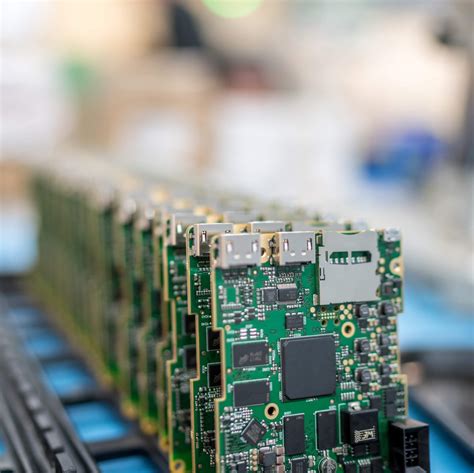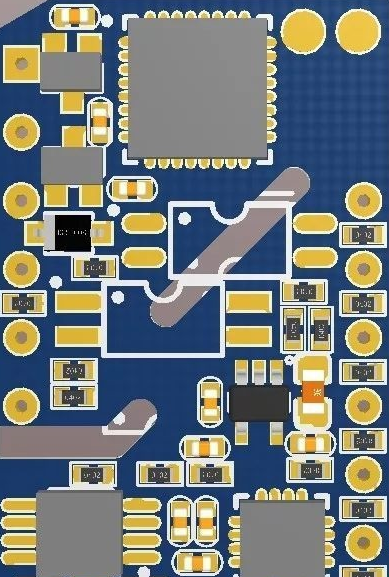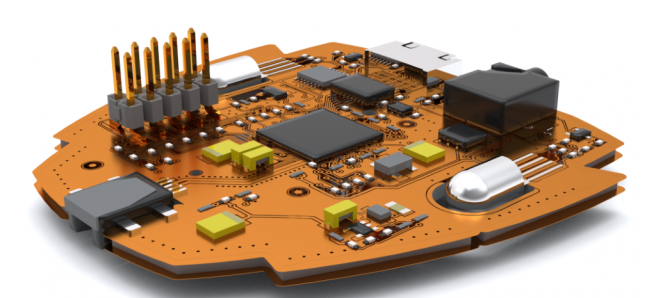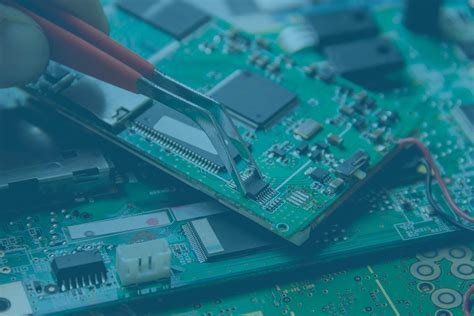Hdi multilayer pcb
Advantages Of HDI Multilayer PCBs In Modern Electronics
High-Density Interconnect (HDI) multilayer printed circuit boards (PCBs) have become a cornerstone in the advancement of modern electronics, offering a multitude of advantages that cater to the ever-evolving demands of technology. As electronic devices continue to shrink in size while increasing in functionality, the need for more efficient and compact circuit board solutions has become paramount. HDI multilayer PCBs address these needs by providing a platform that supports higher component density and improved electrical performance.
One of the primary advantages of HDI multilayer PCBs is their ability to accommodate a higher number of components in a smaller area.
This is achieved through the use of microvias, blind vias, and buried vias, which allow for more interconnections between layers without the need for additional space. Consequently, designers can create more complex circuits without expanding the board’s footprint, making HDI PCBs ideal for compact devices such as smartphones, tablets, and wearable technology. The reduction in size not only contributes to the miniaturization of devices but also enhances their portability and aesthetic appeal.
In addition to size reduction, HDI multilayer PCBs offer improved electrical performance.
The shorter distances between components and the use of advanced materials reduce signal loss and electromagnetic interference, leading to faster signal transmission and greater reliability. This is particularly beneficial in high-speed applications where signal integrity is crucial, such as in telecommunications and computing. Furthermore, the enhanced thermal management capabilities of HDI PCBs help dissipate heat more effectively, ensuring that devices operate within safe temperature ranges and prolonging their lifespan.
Another significant advantage of HDI multilayer PCBs is their contribution to increased design flexibility.
The ability to integrate more layers and components allows engineers to explore innovative design possibilities that were previously unattainable with traditional PCBs. This flexibility is essential in the development of cutting-edge technologies, enabling the creation of more sophisticated and multifunctional devices. As a result, manufacturers can meet the growing consumer demand for products that offer enhanced features and performance.
Moreover, HDI multilayer PCBs support the trend towards environmentally friendly electronics.
By reducing the size and weight of devices, these PCBs contribute to lower material usage and energy consumption during manufacturing and operation. Additionally, the use of advanced materials and manufacturing processes in HDI PCBs often results in less waste and fewer harmful emissions, aligning with global efforts to minimize the environmental impact of electronic production.
Despite the numerous advantages, it is important to acknowledge that the design and manufacturing of HDI multilayer PCBs can be more complex and costly compared to traditional PCBs.
However, the long-term benefits, such as improved performance, reduced size, and enhanced reliability, often outweigh the initial investment. As technology continues to advance, the demand for HDI multilayer PCBs is expected to grow, driving further innovations in their design and production.
In conclusion, HDI multilayer PCBs play a crucial role in the development of modern electronics, offering significant advantages in terms of size reduction, electrical performance, design flexibility, and environmental sustainability. As the industry continues to push the boundaries of what is possible, HDI multilayer PCBs will remain an essential component in the quest for more efficient and powerful electronic devices.
Design Considerations For HDI Multilayer PCBs
When designing High-Density Interconnect (HDI) multilayer printed circuit boards (PCBs), several critical considerations must be taken into account to ensure optimal performance and reliability. HDI technology, characterized by its ability to accommodate more components in a smaller area, is increasingly favored in applications requiring compact and efficient electronic solutions. As such, understanding the nuances of HDI multilayer PCB design is essential for engineers and designers aiming to leverage its advantages.
To begin with, the choice of materials plays a pivotal role in the design of HDI multilayer PCBs.
The materials selected must not only support the electrical and thermal requirements of the application but also be compatible with the manufacturing processes involved. Typically, materials with high glass transition temperatures (Tg) and low coefficients of thermal expansion (CTE) are preferred, as they offer better performance under thermal stress. Additionally, the dielectric constant and loss tangent of the materials should be considered to ensure signal integrity, especially in high-frequency applications.
Transitioning to the layout design, the aspect of layer stack-up is crucial.
A well-planned stack-up can significantly enhance the electrical performance and manufacturability of the PCB. It is essential to balance the number of signal, power, and ground layers to minimize electromagnetic interference (EMI) and ensure efficient power distribution. Moreover, the use of microvias, blind vias, and buried vias in HDI designs allows for greater routing density and improved electrical performance. These vias enable connections between layers without occupying excessive space, thus facilitating the compact nature of HDI PCBs.
Signal integrity is another critical consideration in HDI multilayer PCB design.
As the density of components and traces increases, the risk of signal degradation due to crosstalk, reflection, and impedance mismatches also rises. To mitigate these issues, careful attention must be paid to trace width, spacing, and routing paths. Employing differential pairs and controlled impedance traces can help maintain signal integrity. Furthermore, the use of advanced simulation tools during the design phase can aid in predicting and addressing potential signal integrity problems before fabrication.
Thermal management is equally important in HDI multilayer PCB design.
The compact nature of HDI PCBs can lead to increased heat generation, which, if not properly managed, can affect the performance and longevity of the board. Effective thermal management strategies include the use of thermal vias, heat sinks, and thermal interface materials. Additionally, optimizing the placement of heat-generating components and ensuring adequate airflow can help dissipate heat more efficiently.
Finally, manufacturability and cost considerations should not be overlook
In conclusion, designing HDI multilayer PCBs requires a comprehensive understanding of material properties, layer stack-up, signal integrity, thermal management, and manufacturability. By carefully considering these factors, designers can create high-performance, reliable, and cost-effective HDI PCBs that meet the demands of modern electronic applications. As technology continues to advance, the importance of meticulous design in HDI multilayer PCBs will only grow, underscoring the need for expertise and innovation in this field.

Manufacturing Challenges Of HDI Multilayer PCBs
The manufacturing of High-Density Interconnect (HDI) multilayer printed circuit boards (PCBs) presents a unique set of challenges that require advanced techniques and meticulous attention to detail. As electronic devices become increasingly compact and complex, the demand for HDI multilayer PCBs has surged, driven by their ability to support higher component density and improved electrical performance. However, the intricate nature of these PCBs introduces several manufacturing hurdles that must be addressed to ensure quality and reliability.
One of the primary challenges in manufacturing HDI multilayer PCBs is the precise alignment required during the layering process.
Unlike traditional PCBs, HDI boards often incorporate microvias, which are tiny holes that connect different layers of the board. These microvias must be accurately aligned to ensure proper electrical connectivity. Any misalignment can lead to circuit failures or reduced performance, necessitating advanced imaging and drilling technologies to achieve the necessary precision.
In addition to alignment, the aspect of material selection poses another significant challenge.
HDI multilayer PCBs require materials that can withstand high temperatures and mechanical stress while maintaining electrical integrity. The choice of substrate materials, such as high-performance laminates, is crucial to ensure that the board can endure the rigors of its intended application. Furthermore, the use of advanced materials often involves higher costs, which can impact the overall budget of the manufacturing process.
Moreover, the miniaturization of components in HDI multilayer PCBs demands innovative fabrication techniques.
The reduced size of traces and spaces between them requires advanced etching processes to prevent short circuits and ensure signal integrity. This necessitates the use of cutting-edge equipment and technologies, such as laser direct imaging and precision etching, to achieve the fine features required by HDI designs. Consequently, manufacturers must invest in state-of-the-art machinery and skilled personnel to meet these stringent requirements.
Another challenge lies in the aspect of thermal management.
As HDI multilayer PCBs are designed to accommodate more components in a smaller area, they tend to generate more heat. Efficient thermal management is essential to prevent overheating, which can lead to component failure and reduced lifespan of the device. Manufacturers must incorporate effective heat dissipation techniques, such as thermal vias and heat sinks, into the design and production process to address this issue.
Furthermore, the testing and quality assurance of HDI multilayer PCBs are more complex compared to traditional PCBs.
The increased density and complexity of these boards make it difficult to identify defects and ensure functionality. Advanced testing methods, such as automated optical inspection and X-ray inspection, are often employed to detect potential issues. These methods, while effective, add to the overall cost and time required for production, presenting an additional challenge for manufacturers.
In conclusion, the manufacturing of HDI multilayer PCBs involves a series of intricate challenges that require advanced technology, precise techniques, and careful material selection. As the demand for smaller, more powerful electronic devices continues to grow, manufacturers must continually adapt and innovate to overcome these challenges. By investing in cutting-edge equipment and skilled personnel, they can ensure the production of high-quality HDI multilayer PCBs that meet the evolving needs of the electronics industry.

Applications Of HDI Multilayer PCBs In Emerging Technologies
High-Density Interconnect (HDI) multilayer printed circuit boards (PCBs) have become a cornerstone in the advancement of emerging technologies, offering a multitude of applications across various sectors. As the demand for more compact, efficient, and powerful electronic devices continues to rise, HDI multilayer PCBs provide the necessary infrastructure to support these innovations. Their ability to accommodate a higher density of components on a smaller footprint makes them indispensable in the development of cutting-edge technologies.
One of the most prominent applications of HDI multilayer PCBs is in the field of consumer electronics.
With the proliferation of smartphones, tablets, and wearable devices, manufacturers are constantly seeking ways to enhance performance while minimizing size. HDI technology allows for the integration of more components in a limited space, enabling the production of thinner and lighter devices without compromising functionality. This is achieved through the use of microvias, blind vias, and buried vias, which facilitate complex routing and interconnections within the PCB layers. Consequently, HDI multilayer PCBs are instrumental in meeting the ever-increasing consumer demand for sleek and powerful electronic gadgets.
In addition to consumer electronics, the automotive industry is also experiencing a significant transformation driven by HDI multilayer PCBs.
As vehicles become more sophisticated with the integration of advanced driver-assistance systems (ADAS), infotainment systems, and electric powertrains, the need for reliable and efficient electronic components is paramount. HDI technology supports the miniaturization and increased functionality of automotive electronics, contributing to enhanced safety, connectivity, and energy efficiency. For instance, HDI multilayer PCBs are crucial in the development of radar and camera systems used in autonomous vehicles, where space constraints and performance requirements are particularly stringent.
Moreover, the medical sector is witnessing a surge in the adoption of HDI multilayer PCBs, particularly in the design of medical devices and diagnostic equipment.
The miniaturization capabilities of HDI technology enable the creation of portable and wearable medical devices that offer real-time monitoring and diagnostics. These devices, such as insulin pumps, pacemakers, and hearing aids, benefit from the compact and reliable nature of HDI multilayer PCBs, which ensure consistent performance and patient safety. Furthermore, the precision and complexity afforded by HDI technology facilitate the development of sophisticated imaging equipment, such as MRI and CT scanners, which require intricate electronic systems to function effectively.
The telecommunications industry also reaps the benefits of HDI multilayer PCBs, especially with the ongoing rollout of 5G networks.
The increased data transmission speeds and reduced latency associated with 5G technology necessitate advanced electronic components capable of handling high-frequency signals. HDI multilayer PCBs provide the necessary support for these components, enabling efficient signal processing and transmission. This, in turn, enhances the performance of network infrastructure and consumer devices, paving the way for faster and more reliable communication.
In conclusion, the applications of HDI multilayer PCBs in emerging technologies are vast and varied, spanning consumer electronics, automotive, medical, and telecommunications sectors. Their ability to support high-density component integration and complex interconnections makes them a vital component in the development of modern electronic devices. As technology continues to evolve, the role of HDI multilayer PCBs in facilitating innovation and meeting the demands of increasingly sophisticated applications will undoubtedly expand, driving further advancements across multiple industries.







